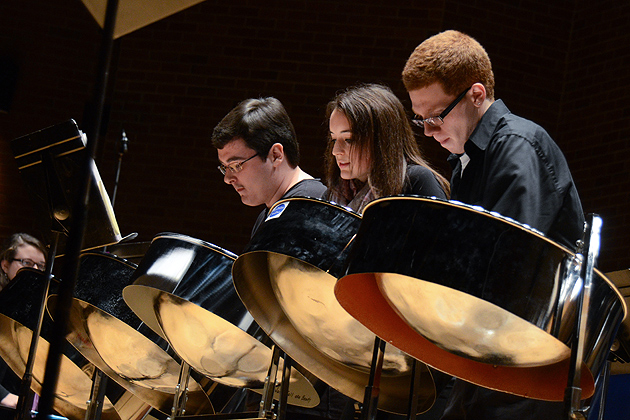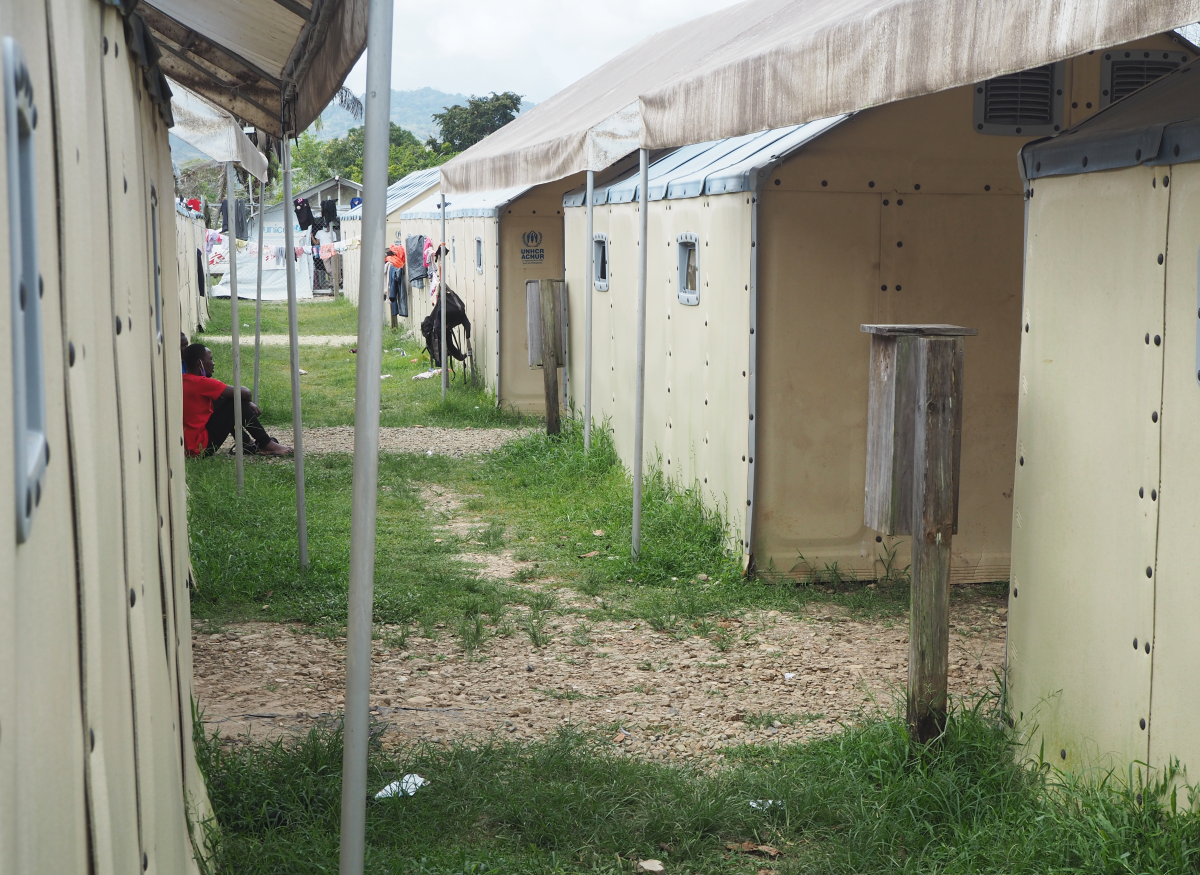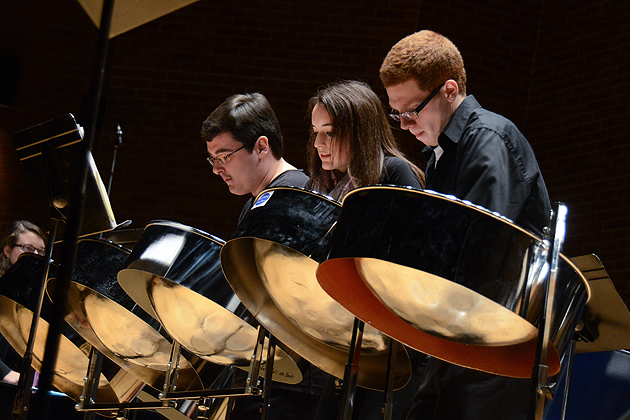
If music is a universal language, then UConn’s steel pan ensemble provides an exclamation point.
This group is made up of 14 students representing a wide range of majors, cultural backgrounds, and musical expertise. They’ve come together to master an art form that has its roots in the culture of the Caribbean, first as Tamboo-Bamboo (using tunable sticks made of bamboo) and then, with the inclusion of items such as spoons, bottles, and assorted pieces of scrap metal, evolving into the music known as Calypso.
Thanks in large part to its location in the middle of World War II shipping lanes, the island Republic of Trinidad and Tobago in the southern Caribbean found itself with an abundance of used 55-gallon oil drums during the 1940s. Local performers quickly identified their potential as instruments and the art of tuning these ‘steel drums’ vastly expanded the range of musical possibility; steel drums became the instrument of choice.
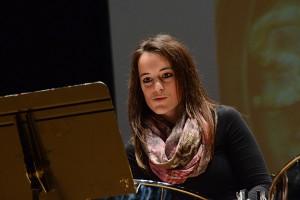
Luci Chaplin ’13 (CLAS), a double major in psychology and human development, first heard UConn’s steel band when she came to an open house for new students. With a musical background that includes mastery of the flute, piano, and tenor sax, and experience performing in both the concert and jazz bands at Lyman Memorial High School in Lebanon, she was immediately drawn to the intricate rhythms and harmonic overtones inherent in the music.
“I first heard the ensemble before I was even enrolled here,” she says, “and then during my freshman year I just happened to be in the Music Building when I heard these amazing sounds coming out of a rehearsal room. I went in and discovered the musicians practicing and I couldn’t resist. I immediately asked if I could join the group.”
The ensemble performs under the guidance of Robert Stephens, professor of music in the School of Fine Arts and a specialist in world music and music education. Although not officially sponsored by the music department – the group is funded in part by the Student Government Association – the ensemble benefits from Stephens’ expertise in the culture and sounds of the Caribbean.
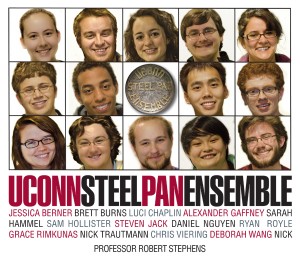 “This is an extraordinary group of students,” Stephens says, “because they’ve come together purely because they love music. We have music majors, pre-med majors, education majors, bioengineering, nursing – you name it. The players come to practice because they enjoy performing this music and it gives them a chance to lose themselves in something that’s very different from their everyday activities.”
“This is an extraordinary group of students,” Stephens says, “because they’ve come together purely because they love music. We have music majors, pre-med majors, education majors, bioengineering, nursing – you name it. The players come to practice because they enjoy performing this music and it gives them a chance to lose themselves in something that’s very different from their everyday activities.”
While the use of steel drums to make music originally grew out of happenstance, the instrument is now very carefully designed. Steel pans are built using sheet metal with a thickness of between 0.8 mm and 1.5 mm. The metal is stretched into a bowl-like shape, and notes of different sizes are molded into the surface. The pitch corresponds to a note’s size – the larger the oval, the lower the tone.
Stephens points out that the steel pan is the only known instrument in existence today that is constructed according to the theories of the Greek philosopher and mathematician Pythagoras. “In a nutshell,” he says, “this is a system of music in which the frequency relationships of all intervals are based on the ratio 3:2. This interval is chosen because it is one of the most consonant or harmonious to the listener. That’s one of the reasons steel pan music has such universal appeal.”
This is a system of music in which the frequency relationships of all intervals are based on the ratio 3:2. This interval is chosen because it is one of the most consonant or harmonious to the listener.
Chaplin adds, “Each of the drums has a different ‘voice,’ including the lead or tenor drum, the double second which is an alto, the cello that is a baritone. And then there are the bass sounds that come from a variety of combinations – from tenor bass to six bass on up to the twelve bass.
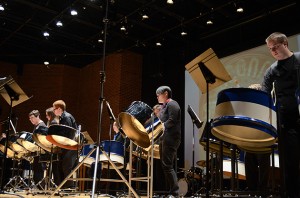
“We welcome everyone who wants to be a part of this experience,” she continues, “and for the first few weeks of each semester we teach all of our new members basic drumming techniques and get them used to the various roles the individual drums play. It helps to be able to read music, but it’s not a prerequisite for joining the ensemble.”
Now in her third year with the group, Chaplin has assumed the role of band leader. She coordinates rehearsals, makes logistical arrangements when the group is booked to appear at various gigs, and manages the advertising. The ensemble recently performed in concert at von der Mehden Recital Hall, and it has hopes for a spring-break tour to the mid-Atlantic states, pending a successful fund-raising effort.
Says Chaplin, “Professor Stephens always tells us that there are no wrong notes, just notes put in wrong places. He encourages us to express ourselves and enjoy the experience of making music. I think we’ve all gotten that message, and it shows in our performances that we love what we do.”
For more photos of the Steel Pan Ensemble, go to the UConn Today Flickr site.
